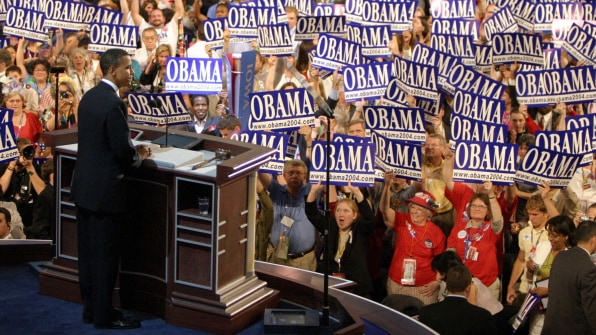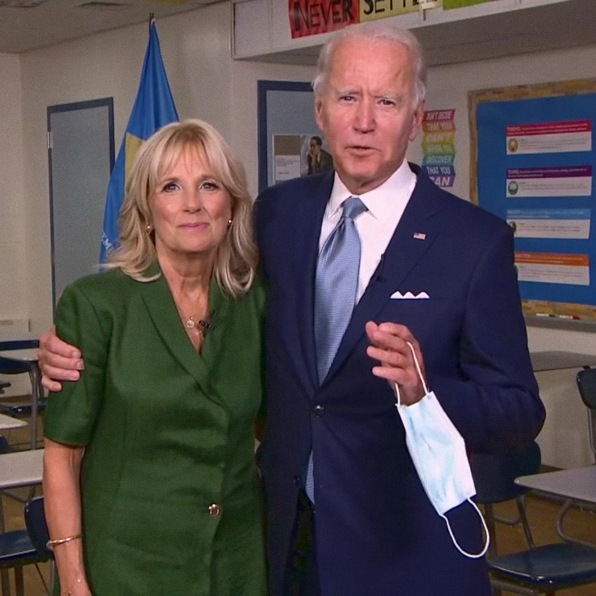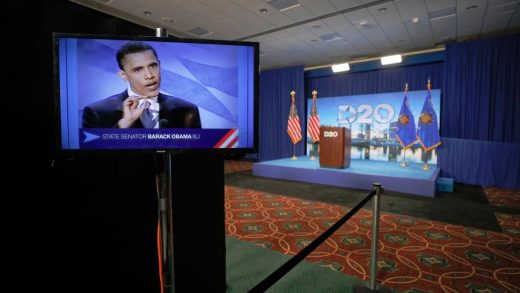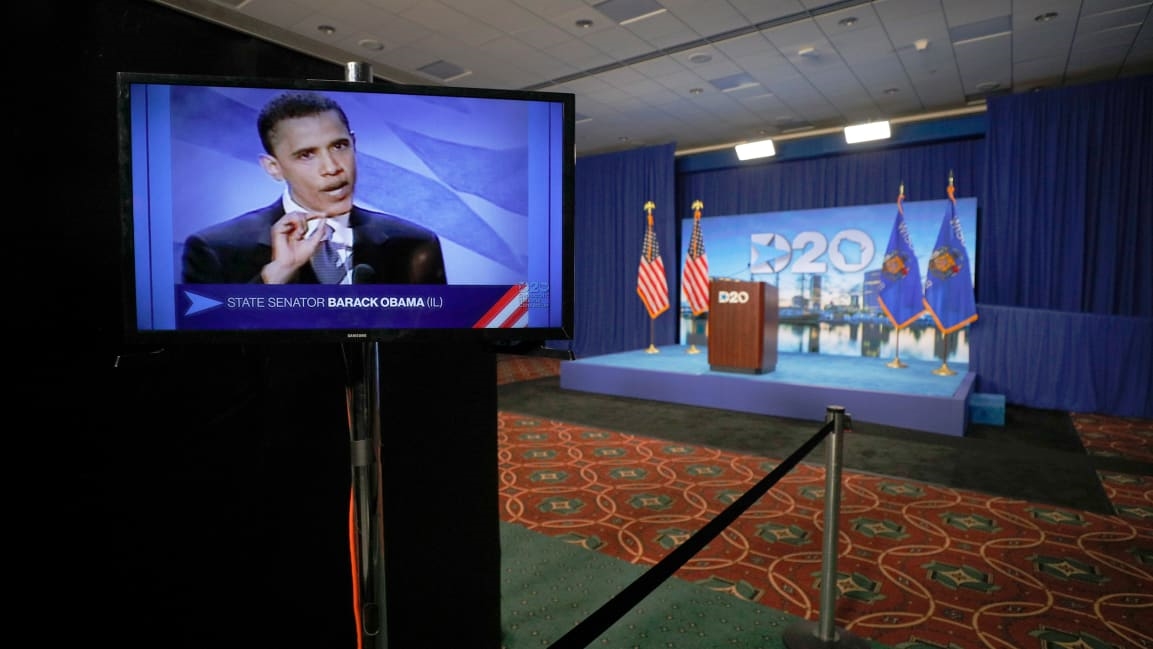The Democrats pulled off a brilliant psychological maneuver at the convention
The year was 2004, when the young senator Barack Obama took the national stage for the first time at the Democratic National Convention to an eager crowd. What followed next were the most electric 17 minutes of political speaking the country had ever seen, culminating in a frenzied standing ovation.
The entire moment is so powerful, to this day, that it’s easy to forget: the Democrats still lost the election.

[Photo: Robyn Beck/AFP/Getty Images]
Fast-forward to 2020, a year marked by global pandemic, and the Democratic National Convention wasn’t broadcast from an arena as planned. Sixteen years after his first appearance, President Obama appeared for a DNC speech again, now with two terms of presidency and a head of gray hair under his belt. But instead of talking to an audience of thousands, he acknowledged that this convention was different, as he stood alone in a room, looking straight into the camera, and spoke to just one person: you.
If the DNC was marked by any single change this year, it wasn’t just the loss of crowds but this addition of audience eye contact. Whether it was Bernie Sanders, Elizabeth Warren, Kamala Harris, or Joe Biden himself, all of their speeches were delivered directly to the viewer.
Curious if this intimate-feeling presentation could make a difference to voters, I reached out to Tampere University professor Jari Hietanen, one of the leading researchers studying the subtleties of eye contact on human psychology and physiology.
“To answer shortly, yes, eye contact definitely matters,” he says, before walking me through decades of research on the matter, including much of his own. Eye contact can impact your attention, your emotion, and even how you evaluate someone as trustworthy or intelligent. The question now will be not just will the Republican National Convention copy this approach next week, but whether conventions going forward look completely different as a result, too.
The power of eye contact
When someone looks you in the eye, the impact on your body is palpable. Your skin electrifies with arousal. Your heart rate increases. And by default, the muscles by your mouth (think of them as happy muscles) activate, while the muscles in your brow (the skeptical grumpy muscles) relax.
Overwhelmingly, the human body responds to attention in a positive way. “That makes sense, humans are social animals,” says Heitanen. “If I see someone is paying attention to me, of course, at a very basic level, it’s a positive thing. I have a possibility to communicate and be together.” (Of course, “eye contact can be a negative signal as well,” Hietanen acknowledges. You only need to imagine a glare from your boss in a meeting to understand exactly what he means.)
The body’s physiological response to eye contact has been measured from in-person conversations many times. Hietanen has also demonstrated that it works within 1:1 Skype chats.
But there’s a catch. Is that feeling the same when you’re not actually talking to someone, like Barack Obama, in a two-way conversation? “The answer in all our studies is it’s not the same thing,” says Hietanen. “The critical thing seems to be that the viewer has to know that the other person is able to see back.”
Huh. So if these speakers aren’t literally chatting with us, why have the DNC speeches been so engrossing? Could there be some other element at play? The short answer is yes.
As Hietanen explains, someone’s gaze still affects our thinking, even when it’s streamed one-way through a laptop or TV screen.
Most importantly, gaze impacts our attention. If someone who is speaking looks right, you’ll naturally look to their right, too. In the case of the DNC, this unbroken eye contact draws our attention and likely makes it harder to ignore the speaker or look away from the screen. On the other hand, in years past, when Obama would have been looking into the crowd, that could prompt you to unconsciously look at the crowd, too.
In this sense, the old DNC had an advantage that the new DNC loses in the age of COVID-19. You are no longer directed to look at that crowd of super fans full of positive emotions that infect you. “The phenomenon is called emotional contagion,” explains Hietanen. “Anybody’s speech elicits effective responses in other people, and I as a viewer see those other people’s affective reactions, they of course have an influence on my [feelings] as well.”
So this DNC offers something of a trade: We go all in with the speaker, at the expense of losing the contagious feelings of the audience.

But there are other benefits of eye contact, too—and these have been proven through screens as well. “There’s lots of research, how first impressions are affected by gaze direction,” says Hietanen. “We know that people who make eye contact are evaluated as more attractive, intelligent, and trustworthy. The more another person makes eye contact, the more positively we evaluate him or her, to a certain degree.”
In other words, if you didn’t know Joe Biden before the DNC, he’d appear better looking, smarter, and more honest simply because he looked into the camera instead of into the crowd. Don’t believe that’s possible? Consider the 9 p.m. evening news broadcast. What makes those talking heads so authoritative? A lot comes down to the fact that they’re speaking right to you.
Knowing all of this, which is the more effective approach? These new remote speeches with eye contact for everyone, or the traditional in-person speeches, broadcast so that you’re influenced by the audience’s response?
Hietanen concedes there are too many variables at play to know the answer to that in the context of conventions. But before hanging up, he does give a nod to the old ways of politics, and the power of stump speeches delivered over and over again, in states across the country. “These live presentations [experienced in person], I would imagine that they are more powerful to get votes,” says Hietanen. “The more you can meet a live audience, the better chances you have to get those votes.”
Fast Company , Read Full Story
(30)



